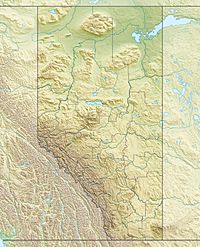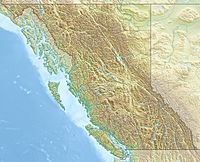Mount Cordonnier facts for kids
Quick facts for kids Mount Cordonnier |
|
|---|---|
| Highest point | |
| Elevation | 3,012 m (9,882 ft) |
| Prominence | 177 m (581 ft) |
| Parent peak | Mount Mangin (3065 m) |
| Geography | |
| Country | Canada |
| Topo map | NTS 82J/11 |
| Climbing | |
| First ascent | 1930 Kate Gardiner, guided by Walter Fuez |
| Easiest route | Scramble routes |
Mount Cordonnier is a tall mountain located right on the border between the Canadian provinces of Alberta and British Columbia. It's part of the Continental Divide of the Americas, which is like a giant imaginary line that separates which way water flows across North America. Water on one side flows to the Pacific Ocean, and water on the other side flows to the Atlantic or Arctic Oceans.
Contents
About Mount Cordonnier
Mount Cordonnier stands at an impressive height of 3,012 metres (9,882 feet) above sea level. It is considered one of the "three-thousanders" because its peak is over 3,000 metres high. The mountain is part of the beautiful Canadian Rockies, a large mountain range in western Canada.
Where is Mount Cordonnier?
This mountain is found in a very special spot. It sits exactly on the border between Alberta and British Columbia. This means that if you were standing on its peak, one foot could be in Alberta and the other in British Columbia! Its location is also part of the Continental Divide, which is a major geographical feature.
How Mount Cordonnier Got Its Name
Mount Cordonnier was given its name in 1918. It was named after a French military leader, General Victor Louis Emilien Cordonnier. He was a general during World War I, a very important global conflict that happened from 1914 to 1918. Naming mountains after important people is a way to remember their contributions.
Climbing Mount Cordonnier
The first recorded climb to the top of Mount Cordonnier happened in 1930. A climber named Kate Gardiner successfully reached the summit. She was guided by Walter Fuez, who was an experienced mountain guide. The easiest way to climb Mount Cordonnier is often by using "scramble routes." Scrambling is a type of climbing that is harder than hiking but easier than rock climbing, often involving using your hands for balance and grip.



